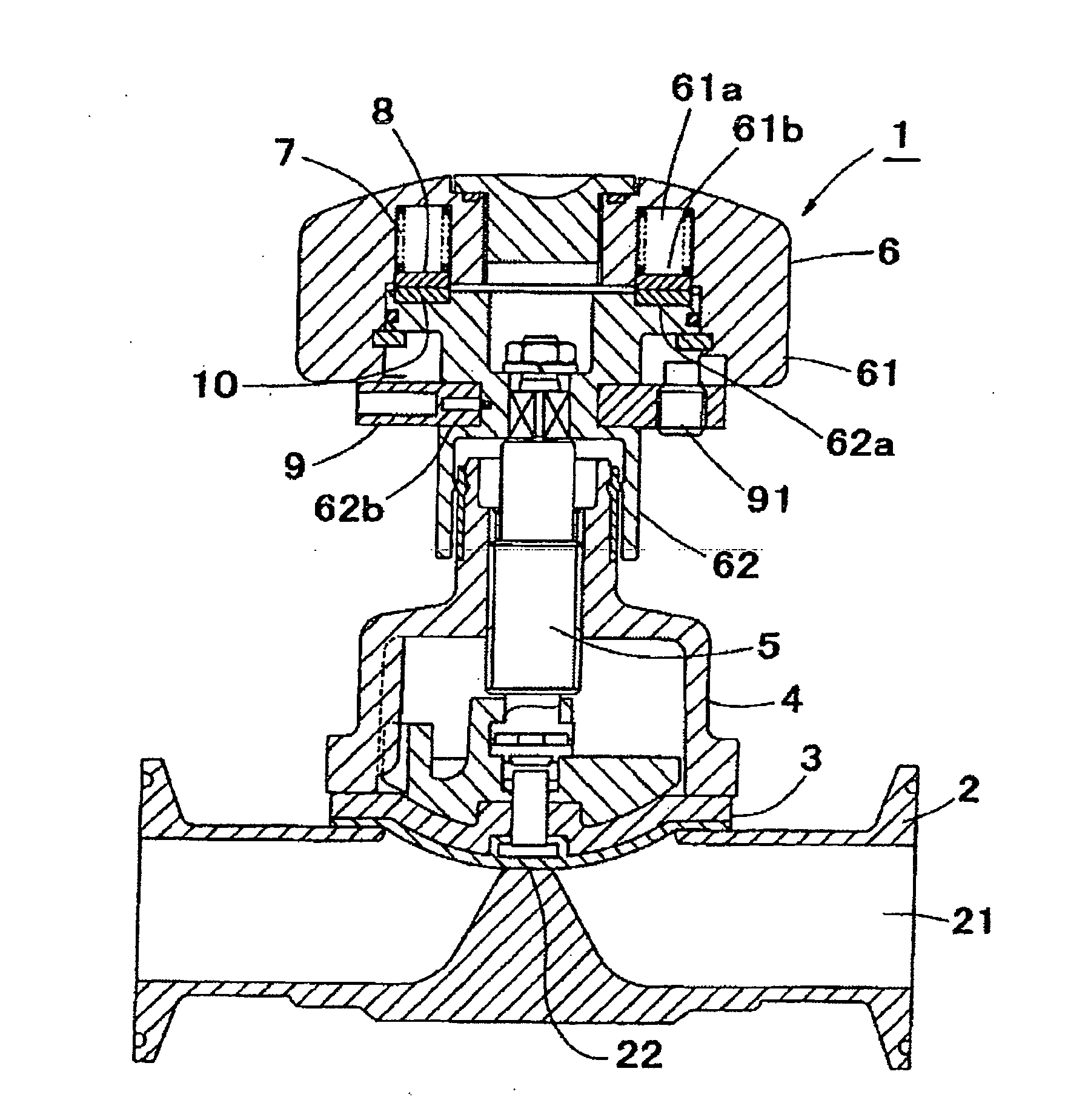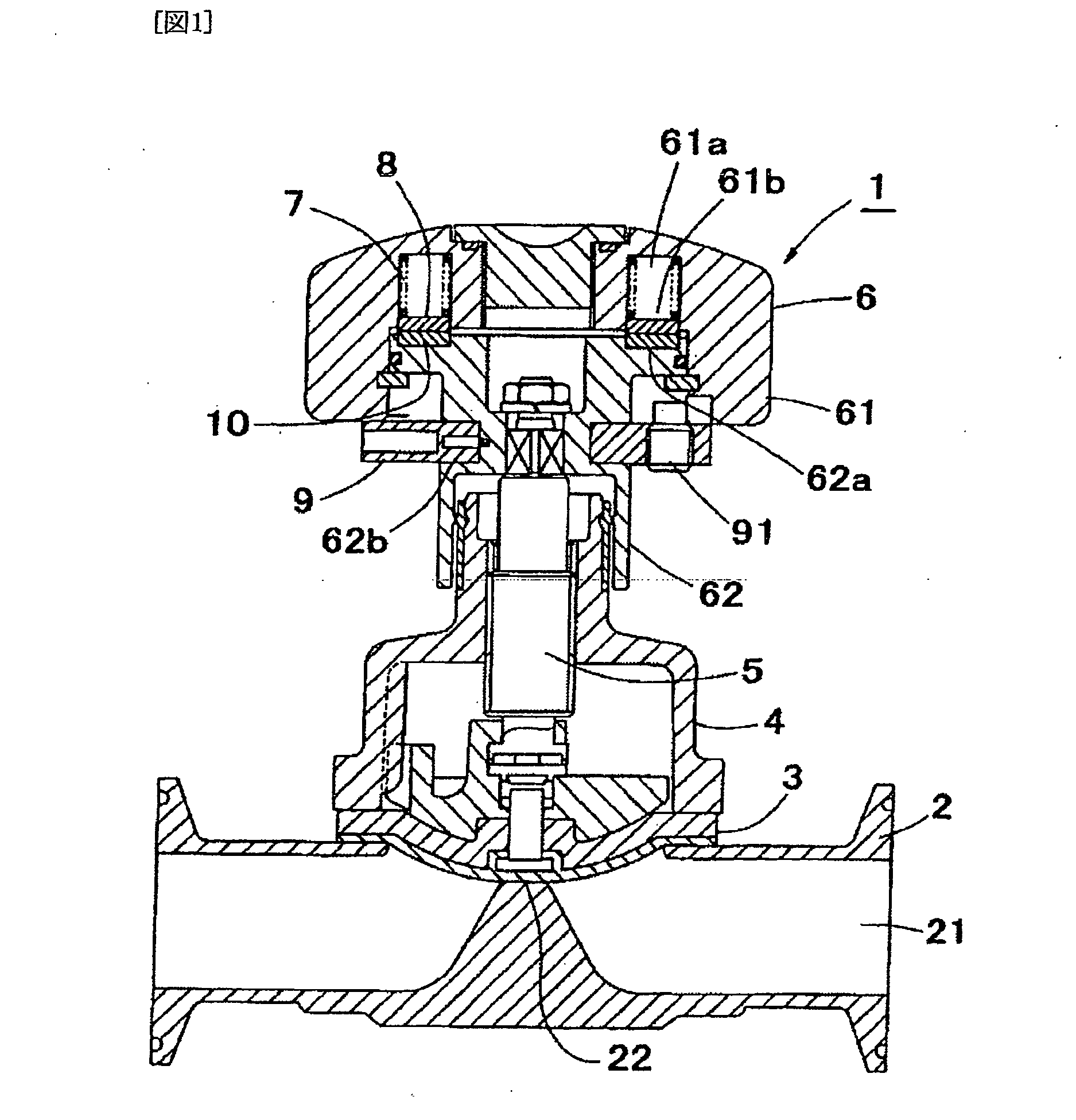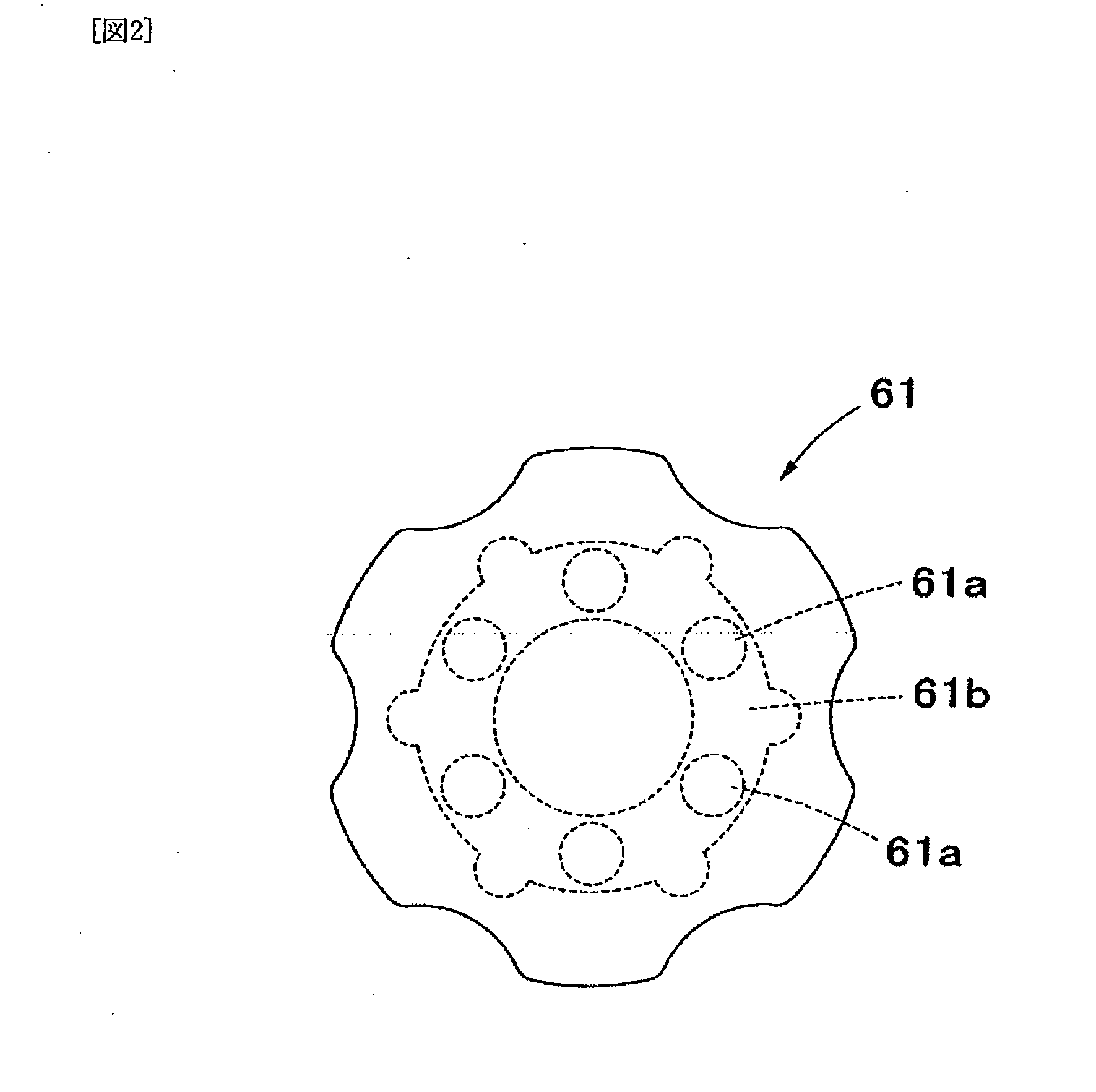Torque-Limiter-Equipped Handle and Fluid Controller Having the Handle
a technology of torque limiter and fluid controller, which is applied in the direction of diaphragm valves, engine diaphragms, slip couplings, etc., can solve the problems of diaphragm valves (z) not being able to stably control fluid flow, diaphragm valves (b) being seriously damaged, and diaphragm valves (z) being unable to adjust the limit torque. , to achieve the effect of stably
- Summary
- Abstract
- Description
- Claims
- Application Information
AI Technical Summary
Benefits of technology
Problems solved by technology
Method used
Image
Examples
first embodiment
[0056]FIG. 1 is a longitudinal section that shows the fluid controller configured with a handle with a torque limiter according to the present invention.
[0057]As shown, the fluid controller (1) of the present invention comprises a valve casing (2) having a fluid channel therein, a valve membrane (3) for opening or closing the fluid channel (21), a pinching element for fixing the periphery of the valve membrane (3) between the valve casing (2) and the pinching element (4), an operating mechanism (5) having a bottom end that is connected with an upper surface of the valve membrane (3), and a handle element (6) for moving vertically the operating mechanism (5).
[0058]In the examples shown, the fluid controller of the present invention is shown as a diaphragm valve of which valve membrane (3) comprises of a diaphragm. Hence, in the description below, the valve membrane (3) is explained as a diaphragm (3).
[0059]The present invention can be applied, however, not only to a diaphragm valve b...
second embodiment
[0092]FIG. 9 is a longitudinal sectional view showing the fluid controller according to the present invention.
[0093]Since the basic configuration of the second embodiment of the fluid controller is similar to those of the first embodiment, only the difference between these embodiments will be described below. Equivalent numerals are assigned to the similar configurations and the description of these configurations will be omitted.
[0094]The difference between the fluid controllers of the first and the second embodiments is that the transmitting member (8) and the transmitted member (10) in the second embodiment are reversely positioned with respect to each other, compared to the first embodiment. In the first embodiment, the transmitting member (8) is places on the transmitted member (10), while in the second embodiment the transmitted member (10) is placed on the second embodiment. The description below will be made mainly on the configurations relating to this difference.
[0095]Insi...
third embodiment
[0107]FIG. 12 is a longitudinal sectional view of the fluid controller according to the present invention.
[0108]As the basic configuration of the third embodiment of the fluid controller is similar to those of the first embodiment, only the difference between these embodiments will be described below. Equivalent numerals are assigned to the similar configurations and the description of these configurations will be omitted.
[0109]The difference between the third embodiment and the first embodiment is that, the fluid controller according to the third embodiment comprises a plurality of spherical transmitting pieces (8). The description below will be made mainly on the configurations relating to this difference.
[0110]Inside the cover portion (61) of the third embodiment, a plurality of receiving holes (61a) downwardly opening is disposed. These receiving holes (61a) are aligned circumferentially with a constant spacing. Each receiving hole (61a) receives therein an elastic body (7) resp...
PUM
 Login to View More
Login to View More Abstract
Description
Claims
Application Information
 Login to View More
Login to View More - Generate Ideas
- Intellectual Property
- Life Sciences
- Materials
- Tech Scout
- Unparalleled Data Quality
- Higher Quality Content
- 60% Fewer Hallucinations
Browse by: Latest US Patents, China's latest patents, Technical Efficacy Thesaurus, Application Domain, Technology Topic, Popular Technical Reports.
© 2025 PatSnap. All rights reserved.Legal|Privacy policy|Modern Slavery Act Transparency Statement|Sitemap|About US| Contact US: help@patsnap.com



